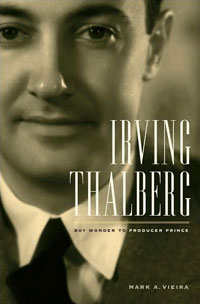The Producer

If you are attuned to such things, you might note that occasionally the Academy Awards honor one of the motion-picture industry’s faceless, behind-the-scenes people known as producers with an accolade named after Irving Thalberg.
Thalberg is something of a Hollywood legend as he was successful at a young age in the early years of the nascent industry—having shepherded the careers of Lon Chaney, Norma Shearer (whom he married), Greta Garbo, Joan Crawford, Clark Gable, and Jean Harlow, and made what are now considered classic films—Ben-Hur, Tarzan the Ape Man, Grand Hotel, Freaks, Mutiny on the Bounty, and The Good Earth—and sadly, because he died at the age of 37.
The role of the producer is probably the least understood job description in the filmmaker’s lexicon, though one would do well to look to David Thomson’s The Whole Equation for a lucid explication as well as a brilliant overview of the Hollywood film machinery—and now comes Mark A. Vieira’s (Greta Garbo: A Cinematic Legacy) Irving Thalberg: Boy Wonder to Producer Prince to refresh the legend, using Norma Shearer’s unpublished memoirs and previously untapped recorded conversations to flesh out a silver-screen icon.
Daniel Mayer Selznick, whose father replaced Thalberg at MGM, opines:
Being the son of David O. Selznick and the grandson of Louis B. Mayer, I have read many books about Irving Thalberg, but none has brought this elusive figure to life as does Mark A. Vieira’s. Because he had access to Norma Shearer’s memoir notes and because he painstakingly reconstructed each year of Thalberg’s brief life, a new figure emerges. Where before we saw a gentle and sensitive man who devoted great care to his films, we now see fierce concentration, arrogance, impatience with stupidity, and a compulsion to oversee every detail of every MGM film. Whatever it cost—and it cost him his health—it resulted in a body of work unprecedented in the history of the medium.
